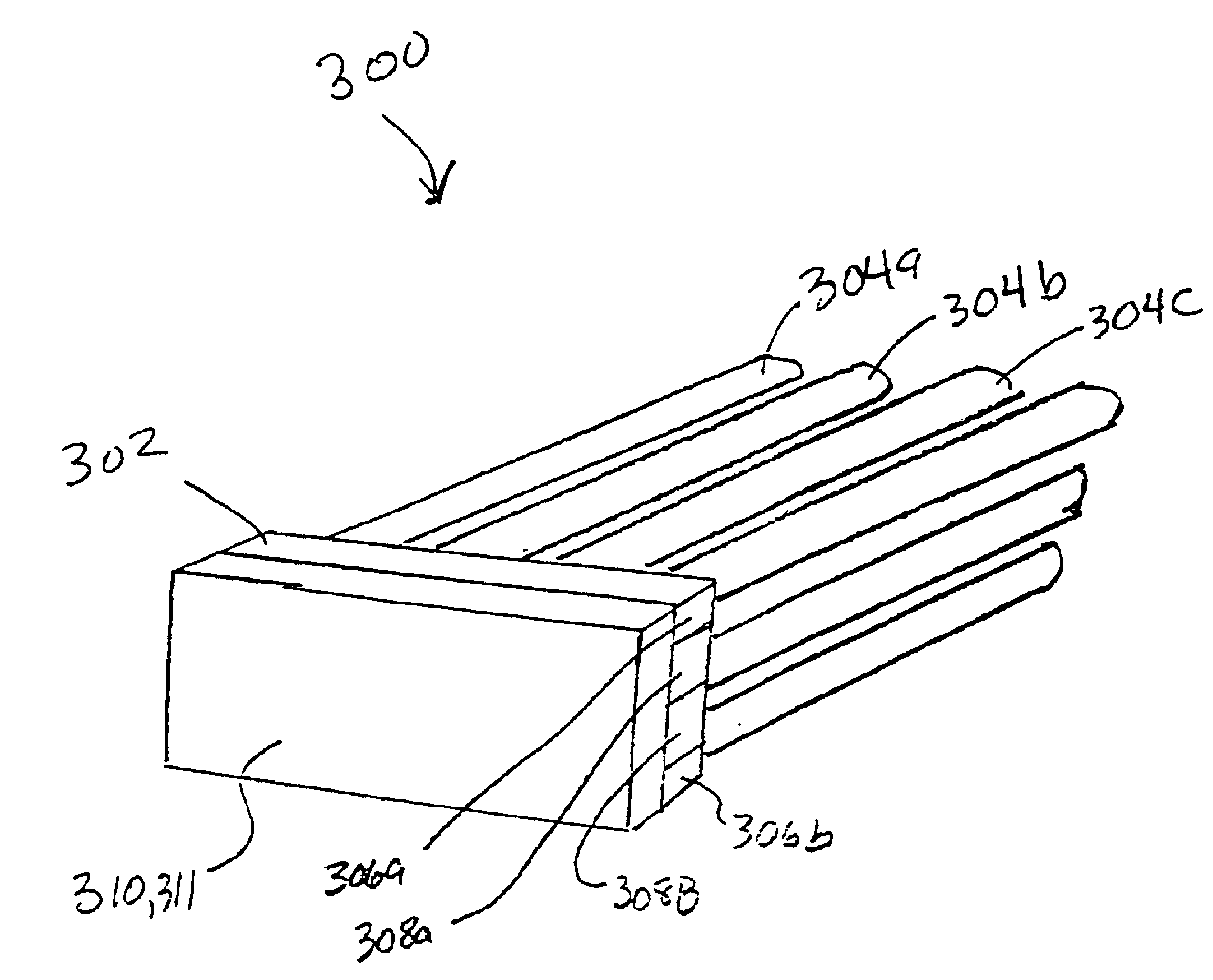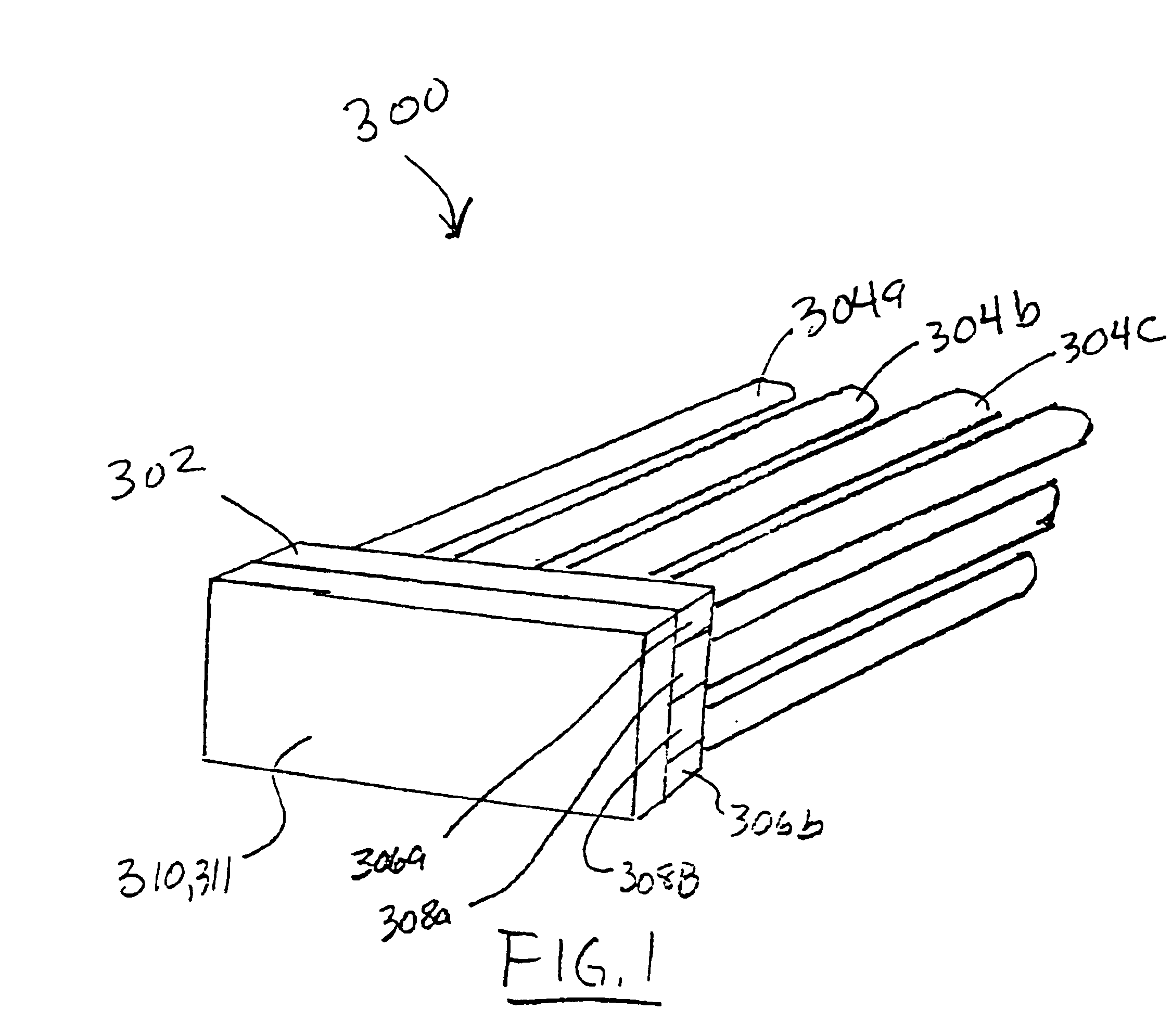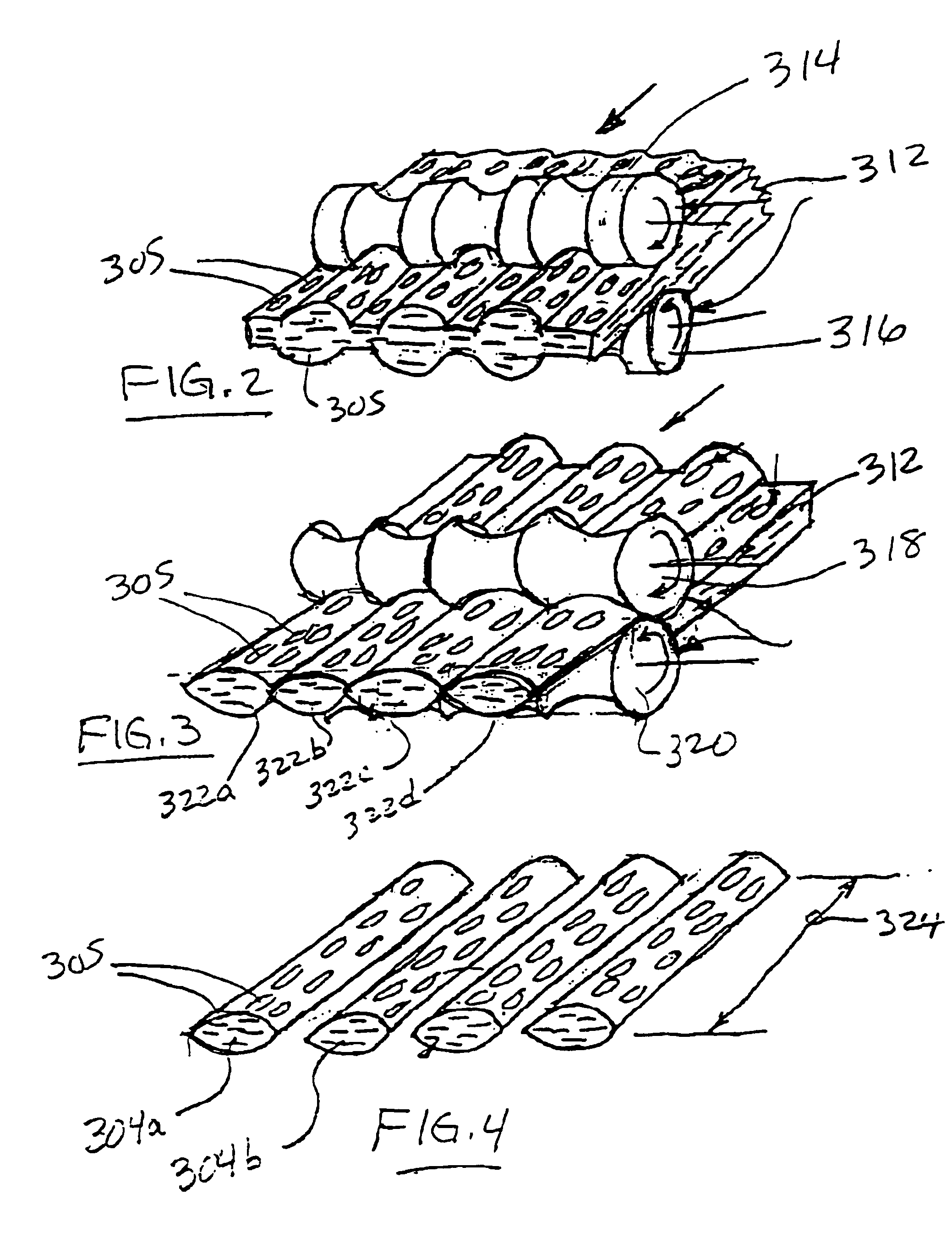Method for making finned heat sink assemblies
a heat sink and fin technology, applied in the field of graphite-based heat sink assemblies, can solve the problems of system failure, affecting the performance affecting the efficiency of the overall system, etc., and achieve the effect of increasing the efficiency of heat transfer and maximizing the dissipation of hea
- Summary
- Abstract
- Description
- Claims
- Application Information
AI Technical Summary
Benefits of technology
Problems solved by technology
Method used
Image
Examples
second embodiment
[0087]In this second embodiment, the base 402 is made from a die graphite powder, which may be resin impregnated. As shown in FIG. 8, individual fins 404 are inserted into holes 408 located in a pair of parallel die plates 410 and 412. The holes 408 are shaped to match the fin contours, and their spacing and location are based on the desired heat transfer properties of the fin assembly. Graphite powder 414 is placed between the die plates, and this assembly is inserted into a die (not shown). The powder is then pressed to consolidate the powder to form base 402 surrounding the fins 404. The assembly is removed from the die, the die plates removed, and the short ends of the fins cut off flush with the base. A sheet 406, which preferably is unimpregnated, is placed on the bottom of the base 402. If the components of the graphite article are not resin impregnated, a thin layer of a resin, such as phenolic, acrylic or epoxy-based resin system can be interposed between the components. Th...
first embodiment
[0104]a radial fin heat sink of the present invention is shown in cross section in FIG. 12, and is identified by the numeral 500. Another embodiment of a radial finned heat sink in accordance with the present invention is shown in cross-section in FIG. 16, and is identified by the numeral 600.
[0105]Referring now to FIGS. 10-12, individual one piece fin members 502, shown in FIG. 10, which nest on each other, are pressed in a die. A separate end piece 504 shown in FIG. 11, is also die pressed. As shown in FIG. 12, any number of individual fin members 502a, 502b, 502c, etc. are then stacked together on top of the end piece 504. A sheet 506 of graphite can also be placed on the end of the end piece 504 to act as a thermal interface 506 to the chip itself. If the graphite article is not resin impregnated, a thin layer of a resin, such as phenolic, acrylic or epoxy-based resin system can be interposed between fin members 502a, 502b, 502c and end piece 504.
[0106]This assembly is clamped t...
PUM
| Property | Measurement | Unit |
|---|---|---|
| Length | aaaaa | aaaaa |
| Flexibility | aaaaa | aaaaa |
Abstract
Description
Claims
Application Information
 Login to View More
Login to View More - R&D
- Intellectual Property
- Life Sciences
- Materials
- Tech Scout
- Unparalleled Data Quality
- Higher Quality Content
- 60% Fewer Hallucinations
Browse by: Latest US Patents, China's latest patents, Technical Efficacy Thesaurus, Application Domain, Technology Topic, Popular Technical Reports.
© 2025 PatSnap. All rights reserved.Legal|Privacy policy|Modern Slavery Act Transparency Statement|Sitemap|About US| Contact US: help@patsnap.com



